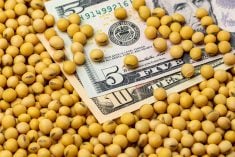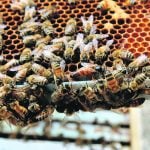Western Canadian feeder cattle prices were generally steady to $3/cwt higher last week as feedlot managers factor in lower input costs in the new crop year.
Cash barley bids in southern Alberta dropped $5/mt within a week to $265/mt for immediate delivery. At the same time, corn bids in the U.S. Midwest dropped over $1 per bushel which contributed to an explosion of buying enthusiasm for yearlings and lighter-weight feeders.
Barley silage season is in full swing in southern Alberta and it is only a couple of weeks until new crop barley comes on the market which will cause barley prices to drop further. Alberta packers were buying fed cattle in the range of $120/cwt to $122/cwt this week and most pen closeouts are now at or slightly above breakeven.
Read Also

U.S. grains: Soy futures post biggest monthly gain in nearly five years on China trade optimism
U.S. soybean futures climbed to a 15-month high and posted their biggest monthly gain in nearly five years on Friday following a rally fueled by the prospect of revived exports to China.
Auction barns across Western Canada are coming to the tail end of summer holidays. However, with excellent pasture conditions the yearling run may start two weeks later than normal. The market was not well defined given the lower volumes so once again cattle buyers looked to the U.S. for price discovery. The USDA reported in Billings Montana, 940-pound steers sold for $150/cwt which is a sharp premium recent sales levels in southern Alberta. Similar weight steers sold near $130/cwt in the Lethbridge area. A mixed small group of Angus-based steers with medium flesh weighing just over 750 pounds sold for $142/cwt in the Calgary region.
Looking forward, I wouldn’t be surprised to see feed barley prices drop under $200/mt during the harvest season which should cause Canadian yearling prices to jump $10/cwt to $15/cwt from current levels. Fed cattle prices for the final quarter of 2013 and first quarter of 2014 are also ratcheting higher given the stronger economic outlook and rise in consumer spending. The two major price influences favour stronger values for feeder cattle later in October and November.
– Jerry Klassen is a commodity market analyst in Winnipeg and maintains an interest in the family feedlot in southern Alberta. He writes an in-depth biweekly commentary, Canadian Feedlot and Cattle Market Analysis, for feedlot operators in Canada. He can be reached by email at [email protected] for questions or comments.












